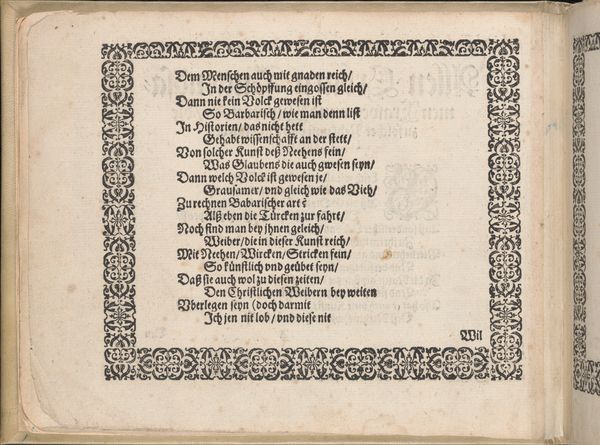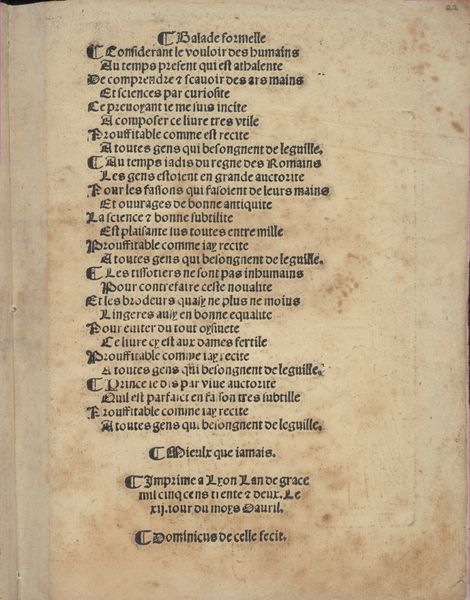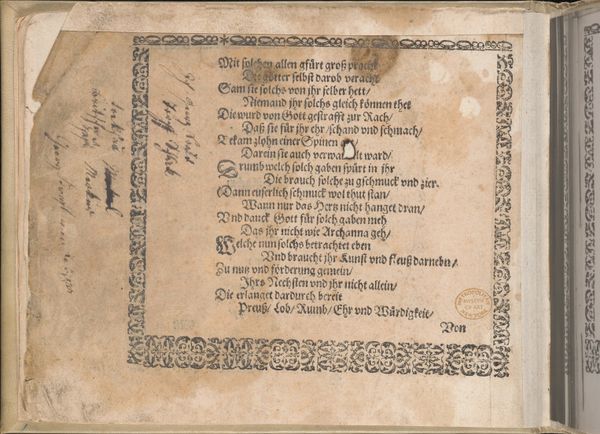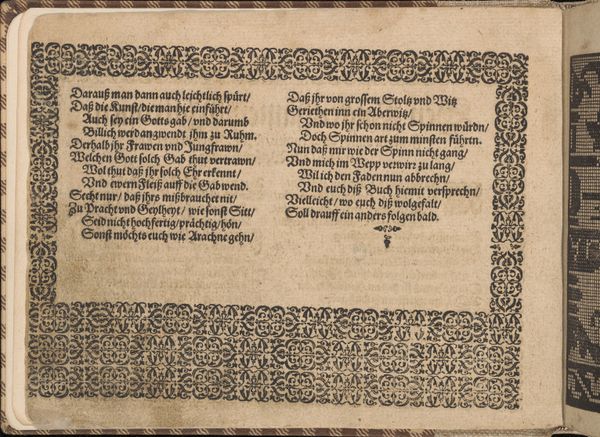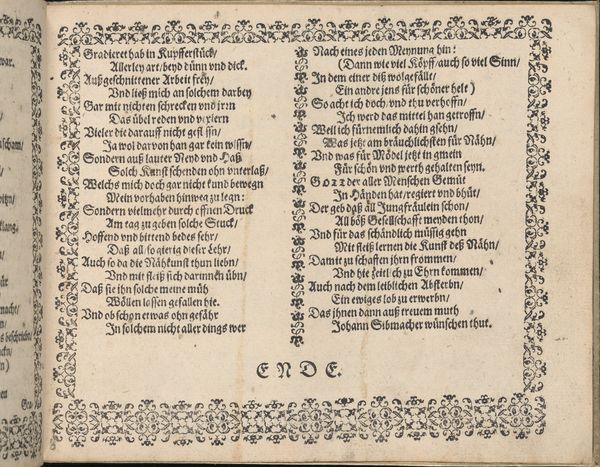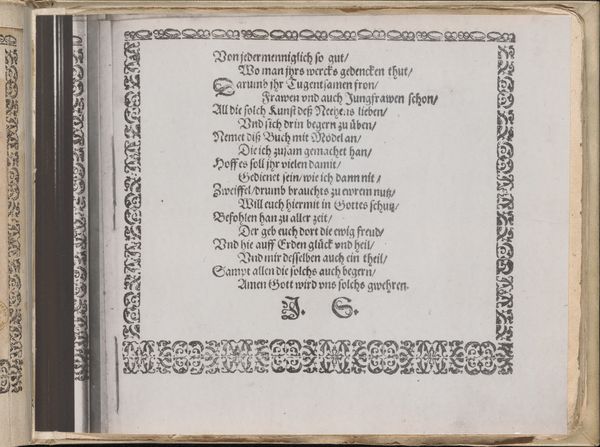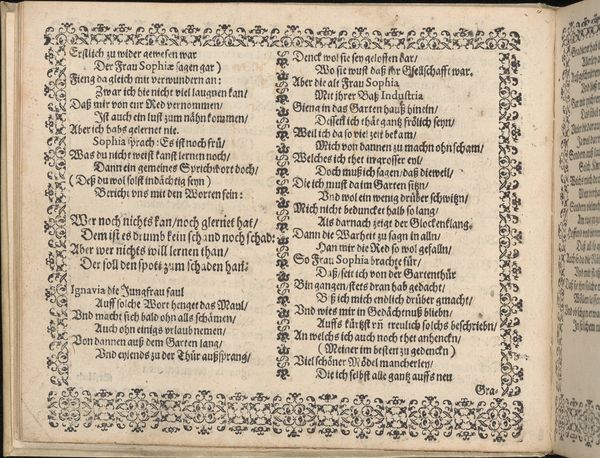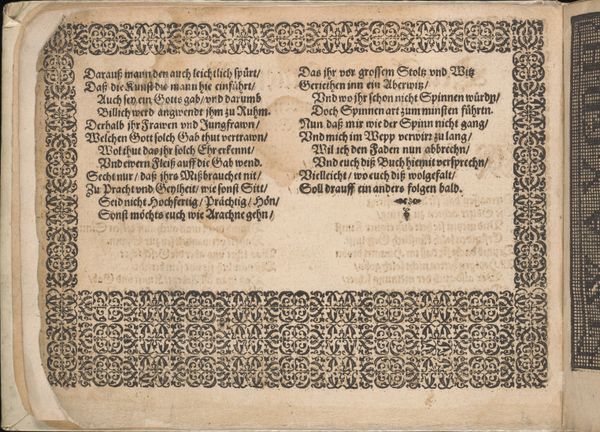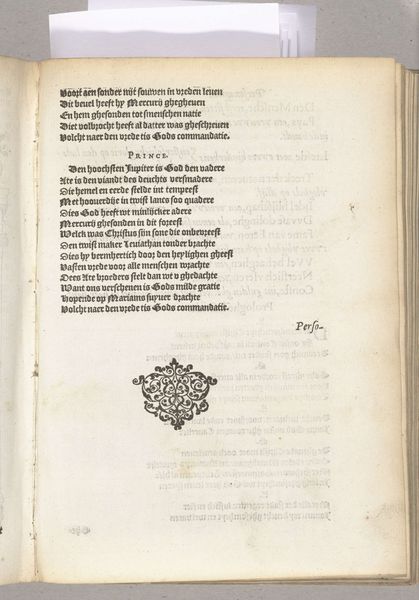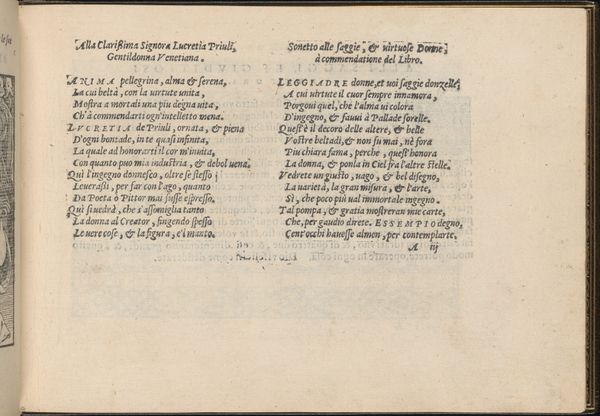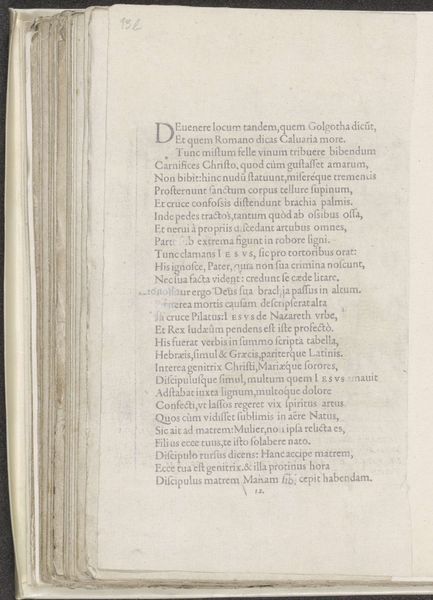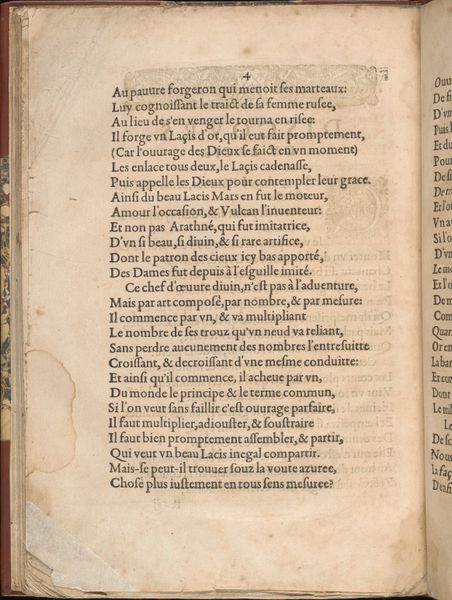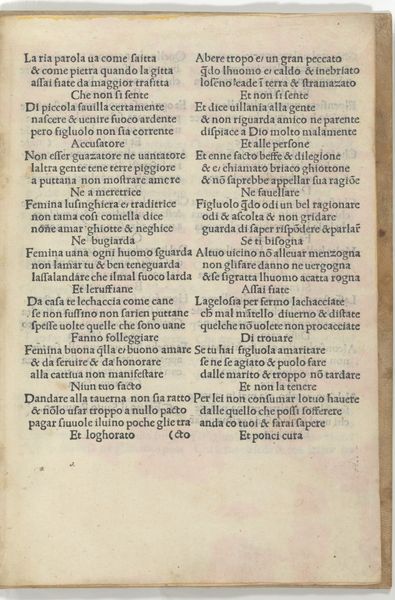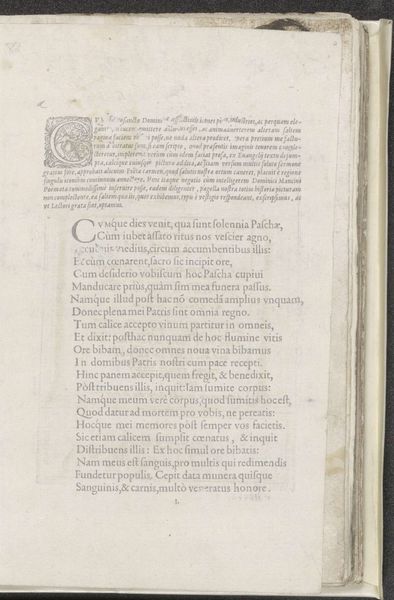
drawing, print, paper, ink
#
drawing
# print
#
book
#
paper
#
ink
#
coloured pencil
Dimensions: Overall: 6 1/8 x 7 13/16 in. (15.5 x 19.8 cm)
Copyright: Public Domain
Curator: Johann Sibmacher’s Schön Neues Modelbuch, dating back to 1597, presents us with an intriguing page of printed text, showcasing his artistry in both drawing and printmaking. Editor: My first impression is of aged parchment, the heavy ink sitting boldly on its surface. It whispers of tangible history, doesn’t it? I want to run my fingers over it and feel the texture. Curator: Indeed. Note the geometric patterning bordering the text. Sibmacher carefully uses this design to frame the verbal content, inviting us to contemplate the relationship between ornamentation and the written word. Consider the weight given to each motif. Editor: The means of production must be considered, though. How long would such a border have taken to execute, given the methods of the period? Were the forms intended for purely aesthetic value, or were they meant as guidelines for lacemakers and embroiderers using this book for design? It certainly bridges fine art with applied craft. Curator: It is important to acknowledge the semiotic weight embedded in these forms; how do these shapes speak to an audience acquainted with them, how do they direct the reader's attention? We are compelled to confront the intricate language that existed at that moment. Editor: But who comprised that audience? The content, rendered with apparent attention to detail, and the quality of its execution implies it would be purchased by a person with the means for skilled labour and a certain level of cultural capital. The paper itself tells a story of its journey. Curator: Perhaps you’re right, we shouldn’t ignore the economic factors at play. Nevertheless, to experience the book properly one must carefully unpack its visual architecture, considering that both structure and symbol form its power. Editor: In my estimation, examining the production process can tell us even more. Seeing the fibers of the paper, noticing the distribution of ink, and envisioning the artisan at work invites us to fully understand how it has meaning for those of us centuries later. Curator: I appreciate the detail and nuance revealed as we move between visual impact and tangible methods. Editor: I am glad to feel this page being rendered whole by combining how the work looks with how the work was made.
Comments
No comments
Be the first to comment and join the conversation on the ultimate creative platform.
